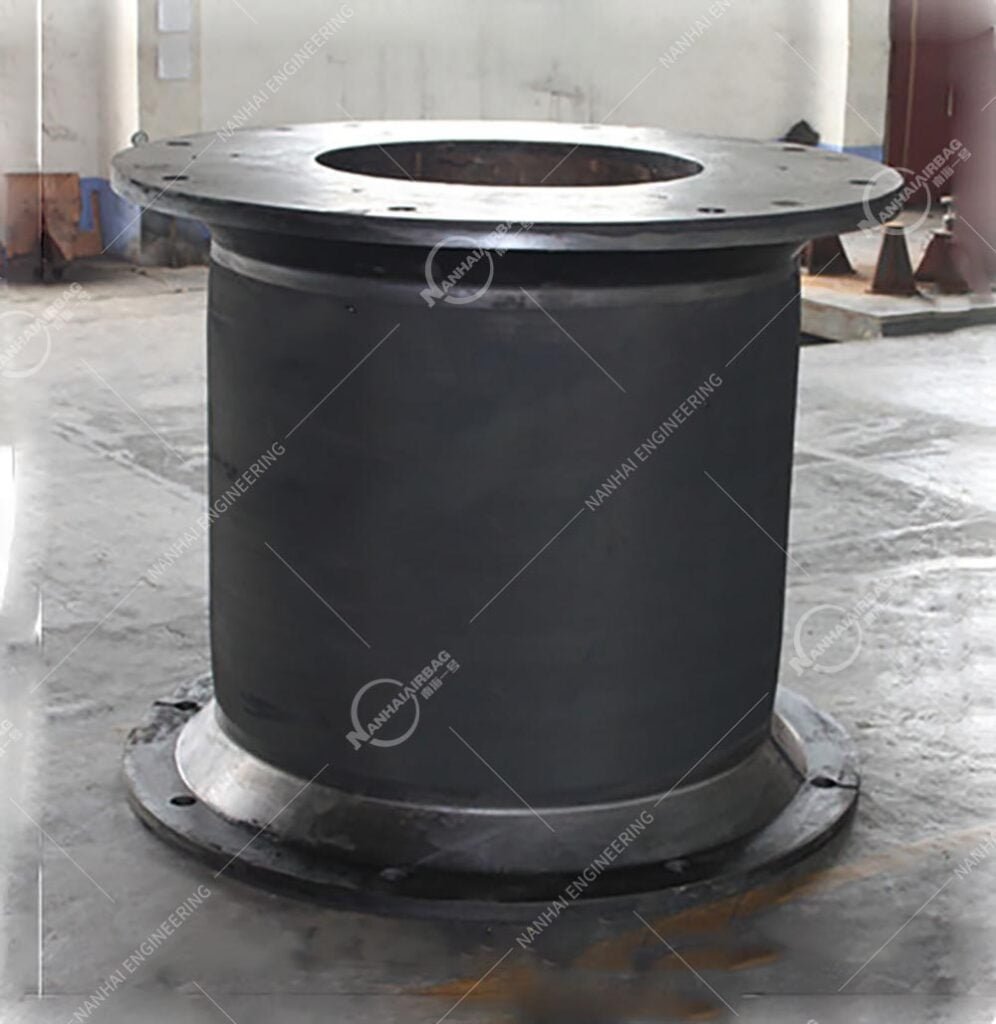Hydro Pneumatic Fenders: The Marine Industry’s Ultimate Defense Against Costly Collisions
17/07/2025Buoyancy Airbags: The Marine Industry’s Secret to Safe, Efficient Vessel Handling
24/07/2025

Ever watched a 300-meter cargo ship glide into a busy port? The tension is palpable—until it glides past the dock, protected by a row of sturdy, rubbery barriers. Those barriers? Super cell rubber fenders—the unsung heroes keeping ships, docks, and crews safe from costly collisions. Unlike their smaller, older rubber cousins, these industrial-grade fenders are built to handle the brute force of modern megaships, making them a must-have for ports, shipyards, and offshore operations worldwide. Let’s break down why they’re rewriting the rules of marine safety.
What Are Super Cell Rubber Fenders? (The Quick Answer)
Super cell rubber fenders are advanced marine fenders engineered with a multi-cellular rubber structure and reinforced steel cores to absorb and redistribute kinetic energy during high-impact ship-to-dock or ship-to-ship collisions. Think of them as the “bodyguards” of the marine world: their layered design spreads impact forces across multiple rubber cells, preventing tears, cracks, or structural failure—even when stopping 10,000-ton vessels at full speed.
Why This Matters: When Regular Fenders Just Can’t Keep Up (And the Costs Add Up)
Imagine a bustling port in Singapore during peak season. A 24,000 TEU container ship approaches the dock at 6 knots. The crew relies on standard rubber fenders to cushion the blow… but they’re no match for the ship’s sheer mass. The fenders tear, the hull scrapes the pier, and suddenly you’re looking at:
- $2M+ in hull repairs for the ship.
- $500k in dock damage (cracked concrete, bent steel supports).
- 72 hours of downtime—costing the port $100k/day in lost revenue.
This isn’t a worst-case scenario—it’s reality. Ports using outdated rubber fenders report 30–40% more collision-related incidents than those with super cell systems. Why? Because today’s ships are bigger (the world’s largest container ship weighs 240,000 tons!), faster, and carry more cargo. Standard rubber fenders simply can’t handle the pressure—they tear, flatten, or lose shape after a few impacts.
Super cell rubber fenders solve this by absorbing 50–70% more energy than traditional rubber fenders. They’re the difference between a fender that “bounces back” and one that fails catastrophically.
How Do Super Cell Rubber Fenders Work? The Science of “Smart” Impact Protection
These aren’t your average dock bumpers—they’re engineering marvels built for extreme conditions. Here’s what makes them tick:
1. Multi-Cellular Rubber Design
At their core, super cell fenders feature a grid of interconnected rubber cells (hence the name “super cell”). When a ship collides, the energy spreads across these cells instead of concentrating in one spot. This prevents tears and distributes force evenly—critical for stopping large vessels without damaging hulls or docks.
2. Reinforced Steel Cores
Hidden inside each fender is a steel frame or cable reinforcement. This adds rigidity to the rubber structure, keeping it from deforming under heavy pressure. Unlike flimsy rubber fenders that “bulge” on impact, super cells maintain their shape, ensuring consistent protection over time.
3. EPDM Rubber for Durability
Most super cell fenders use EPDM (ethylene propylene diene monomer) rubber—a material built to resist UV rays, saltwater corrosion, ozone, and extreme temperatures (-40°C to 100°C). This means they last 2–3 times longer than standard natural rubber fenders, even in harsh coastal environments.
Why Super Cell Rubber Fenders Beat the Competition
Not all marine fenders are created equal. Let’s compare:
1. vs. Regular Rubber Fenders
Regular rubber fenders are cheap and simple—they work for small boats or low-traffic docks. But they tear easily, require frequent replacements, and can’t handle heavy impacts. Super cell fenders? They’re built for megaships, with 3–5x the lifespan and 2x the energy absorption.
2. vs. Marine Airbags
Marine airbags are great for lifting ships during dry dock launches—they use compressed air to inflate and support vessels. But they’re not designed for impact absorption. Super cell rubber fenders, on the other hand, are engineered to stop moving ships, making them the go-to for docking safety.
3. vs. Steel Fenders
Steel fenders are durable but rigid—they transfer impact forces back to the ship, causing hull damage. Super cell fenders absorb and redirect energy, reducing stress on both the vessel and the dock.
People Also Ask: Your Top Questions About Super Cell Rubber Fenders
Q: How much weight can a super cell rubber fender handle?
A: They’re rated for massive impacts—most models handle 500–5,000 tons of force. For context, that’s equivalent to stopping a 300-meter cargo ship moving at 8 knots.
Q: Do they need frequent maintenance?
A: No—thanks to their EPDM rubber and steel reinforcement, they only need monthly inspections (check for cracks or debris) and annual cleaning. Replace seals every 3–5 years, and they’ll last for decades.
Q: Can they be used in icy or salty water?
A: Absolutely. EPDM rubber resists corrosion from saltwater, and the multi-cell design prevents ice from getting trapped (unlike solid rubber fenders). They’re a favorite in Arctic and subarctic ports.
Q: Are they customizable?
A: Yes. Manufacturers offer different cell sizes, heights (from 30cm to 2m), and configurations (curved, straight, or modular). You can even mix sizes to fit irregular dock shapes.
Q: Are they worth the upfront cost?
A: Definitely. Ports and shipyards recoup the investment in 2–3 years through fewer repairs, lower insurance premiums, and reduced downtime. One port in Rotterdam saved $1.2M annually after switching to super cell fenders.
Final Thoughts: Don’t Let Collisions Sink Your Bottom Line
In an industry where every collision costs time, money, and reputation, super cell rubber fenders aren’t just an upgrade—they’re a lifeline. They protect your assets, keep operations running smoothly, and future-proof your port against bigger ships and stricter safety regulations.
Ready to upgrade? Start by contacting trusted marine equipment suppliers (look for those specializing in marine fenders and rubber fenders). Your hull, your dock, and your bottom line will thank you for years to come.
